How to Turn a Thrift Store Maxi Skirt into a Summer Jumper

A couple weeks ago I visited my best friend Annie down in LA, and she brought me to this magical land called the Melrose Flea Market in West Hollywood. There were tents and tents filled with amazing thrift store finds, cute tiny gold jewelry and even plush flair pins. (I picked up one of Drake’s head. It’s amazing.) We walked into this one tent filled with jumpers and I was in heaven. The maker told me how she finds thrift store maxi skirts and turns them into jumpers by adding fun fabric to the top. I immediately thought of you B+C fans out there and knew I needed to create a post showing you how to turn a maxi skirt into a summertime romper. For all you LA folks, go show love and support for this jumper genius; all the rest of you, scour your closets for maxi skirts and repurpose them into jumpers ASAP.

Materials + Tools:
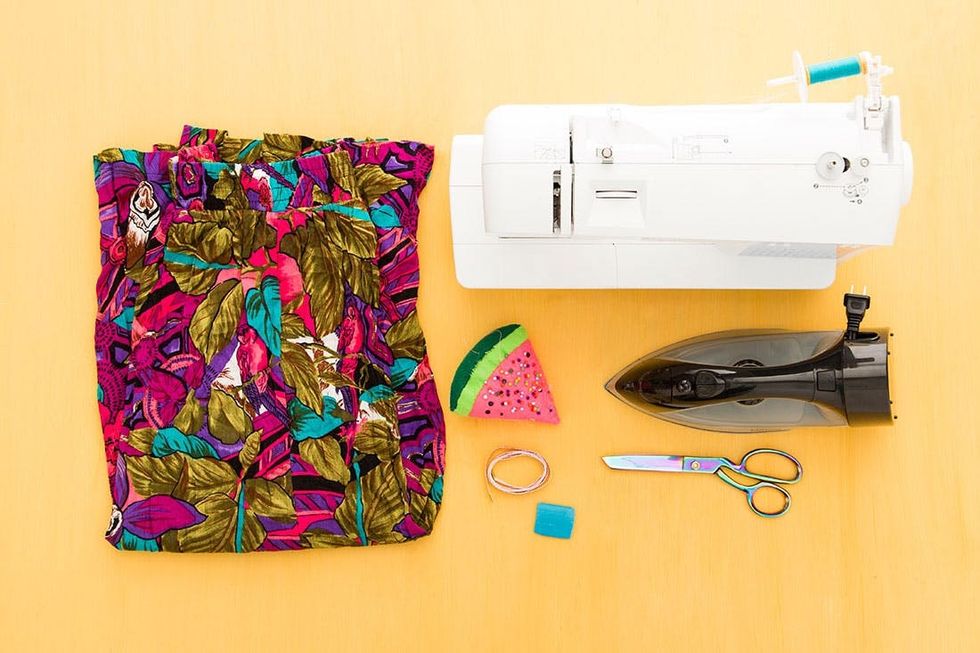
— maxi skirt
— sewing pins
— measuring tape
— fabric scissors
— fabric chalk
— sewing machine
— iron
Instructions:
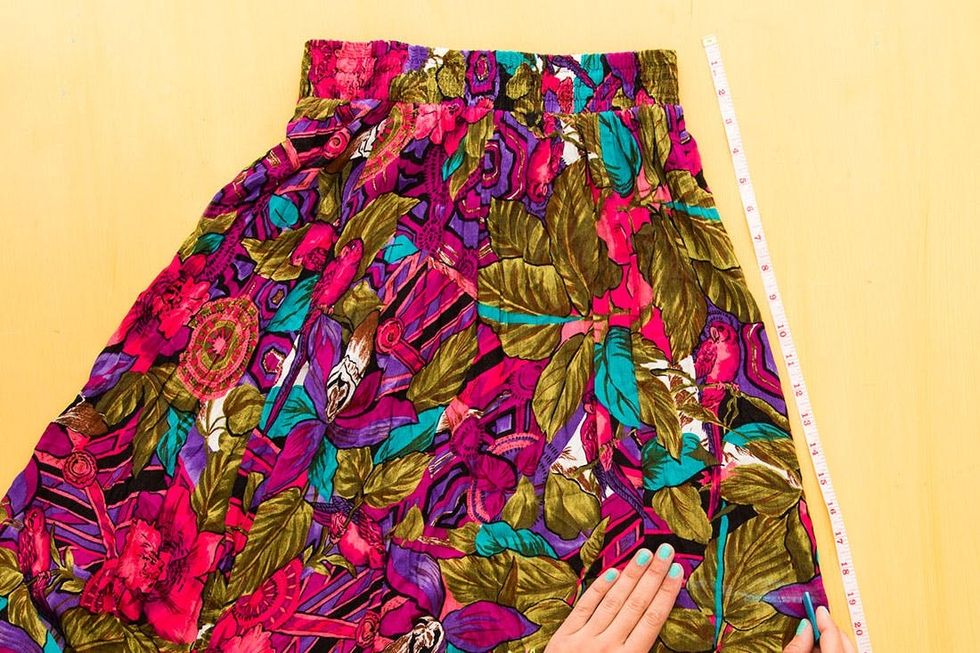
1. Try on your skirt and create a mark at the length you want to make your jumper. Measure out on a table and trim off the extra fabric.
2. Create a 13 x 8-inch template out of paper and pin onto the excess fabric from the bottom of your skirt. Cut out four 13 x 8-inch panels.
3. Pin two rectangles to each other and sew down the 13-inch side to create a new rectangle measuring 13 x 16 inches.
4. Pin the two 13 x 16-inch rectangles together and sew around three sides.
5. Turn the large rectangle right side out, pin and sew to the waistband of the skirt.
6. Cut two long rectangles that measure about 28 x 4 inches for your straps. Fold in half and sew.
7. Turn them right side out and pin to the top edge of the rectangle top and the back of the skirt waistband. Sew in place.
Try on your new thrift store purchase and decide the length of your new jumper. Try to trim at least eight inches off of the bottom to follow this tutorial, but if that isn’t possible, I will give you tips and tricks to make it work ;)
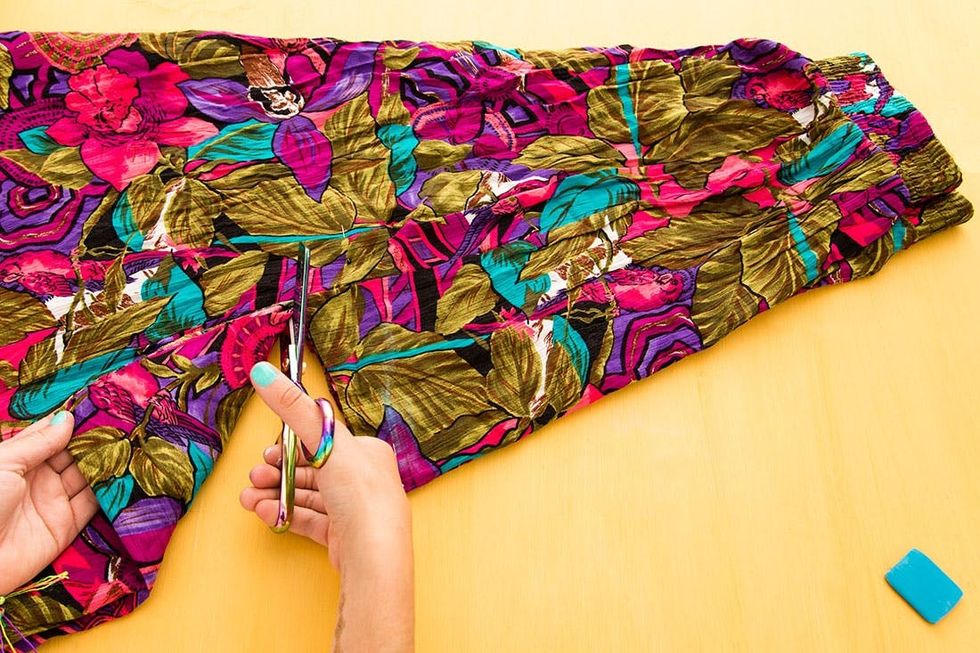
My #1 tip for trimming clothing is always cut below the line you first measured. You can always cut off more but you can never add more back on. In this case, I cut about one inch underneath my marked line.

Our skirt was made from a cinched fabric, so I ran an iron over it to smooth it out so that I would be able to cut rectangles the correct size. Measure out a piece of paper that is 13 x 8 inches and then pin to the fabric. Cut out four 13 x 8-inch rectangles.
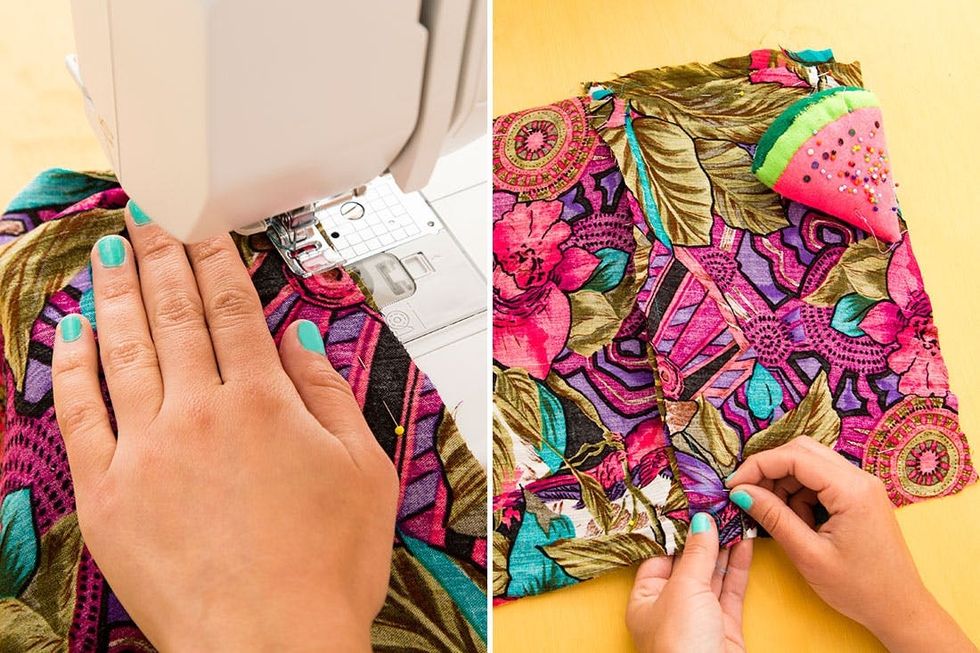
Pin two rectangles together and sew along the 13-inch side. This will create a 16 x 13-inch rectangle. Pin the two large rectangles together (good sides facing inward) and sew around three sides. (Sew the two 16-inch sides and one 13-inch side.) Pro tip: If you have enough skirt material to create a 16 x 13-inch rectangle, skip ahead to this step — there is no need to tile the two pieces together. On the other hand, if you don’t have enough fabric to cut out four 13 x 8-rectangles try cutting out 3 x 4-inch squares and sewing four together to create a large tile for the top rectangle of your jumper.

Turn the rectangle right side out, fold over the raw edge and pin to the waistband of the skirt.
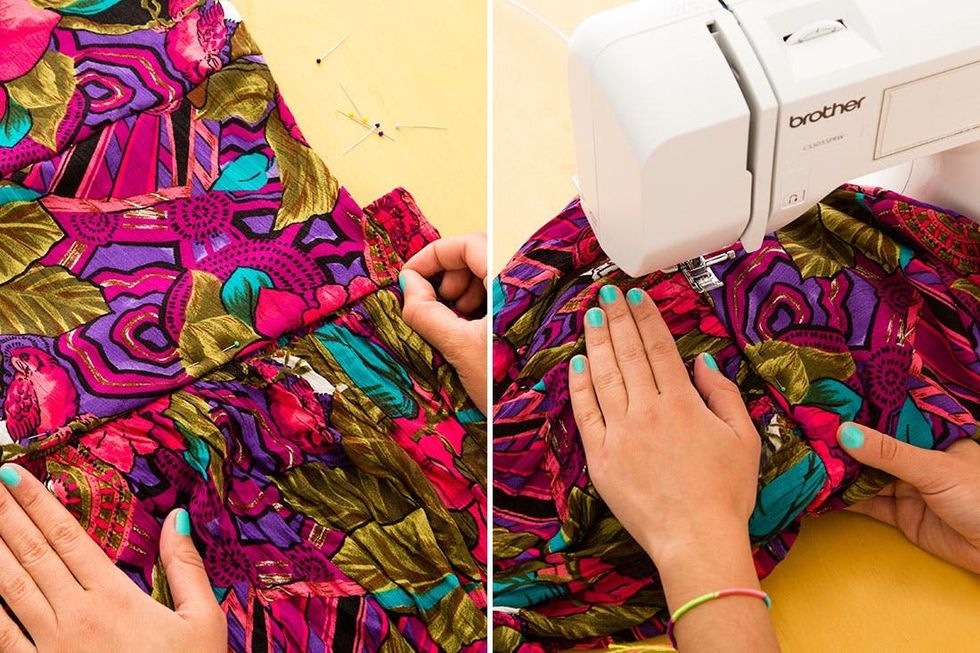
Pin and sew to create the new top of your thrift store jumper!
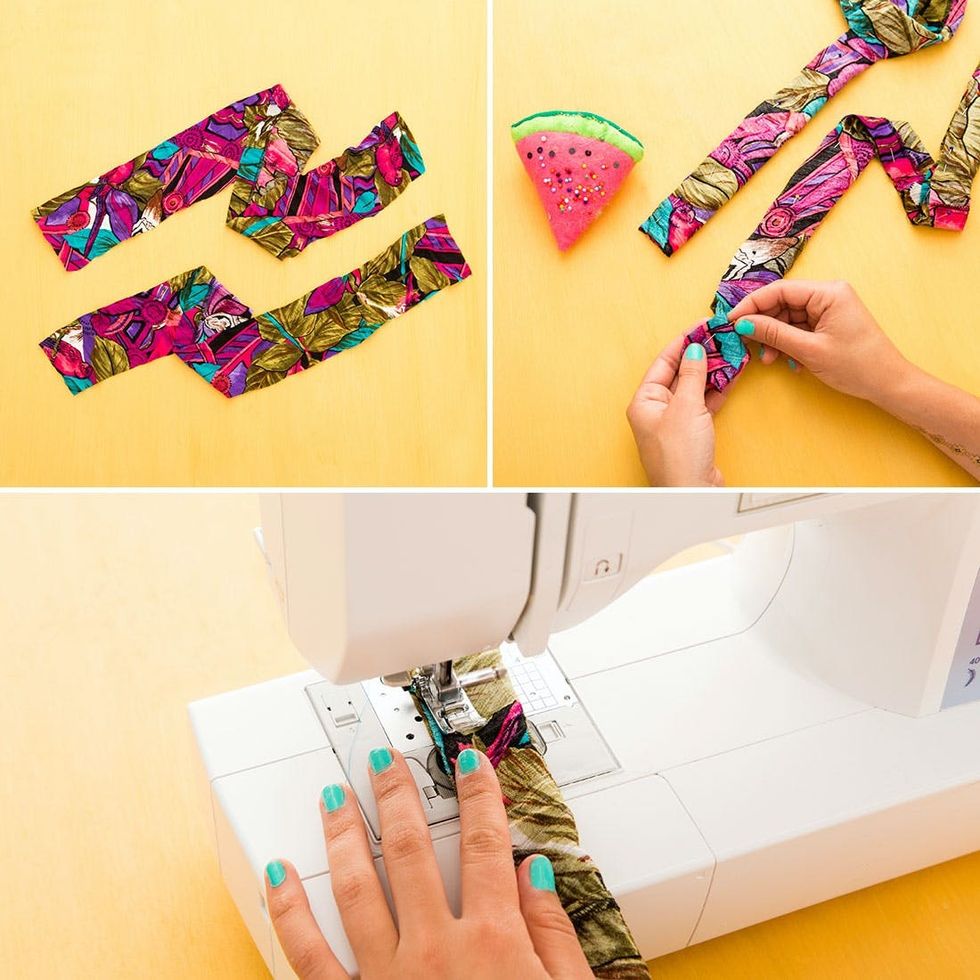
Cut two straps from the remaining skirt fabric. Ours measured 28 x 4 inches, but we suggest using measuring tape to figure out the appropriate length for your strap. Pin good sides facing inward, sew and then turn right side out.

Fold the raw edge under and pin one edge of the strap to the top of the rectangle. Criss cross the straps and pin the other edge to the waistband of the skirt.
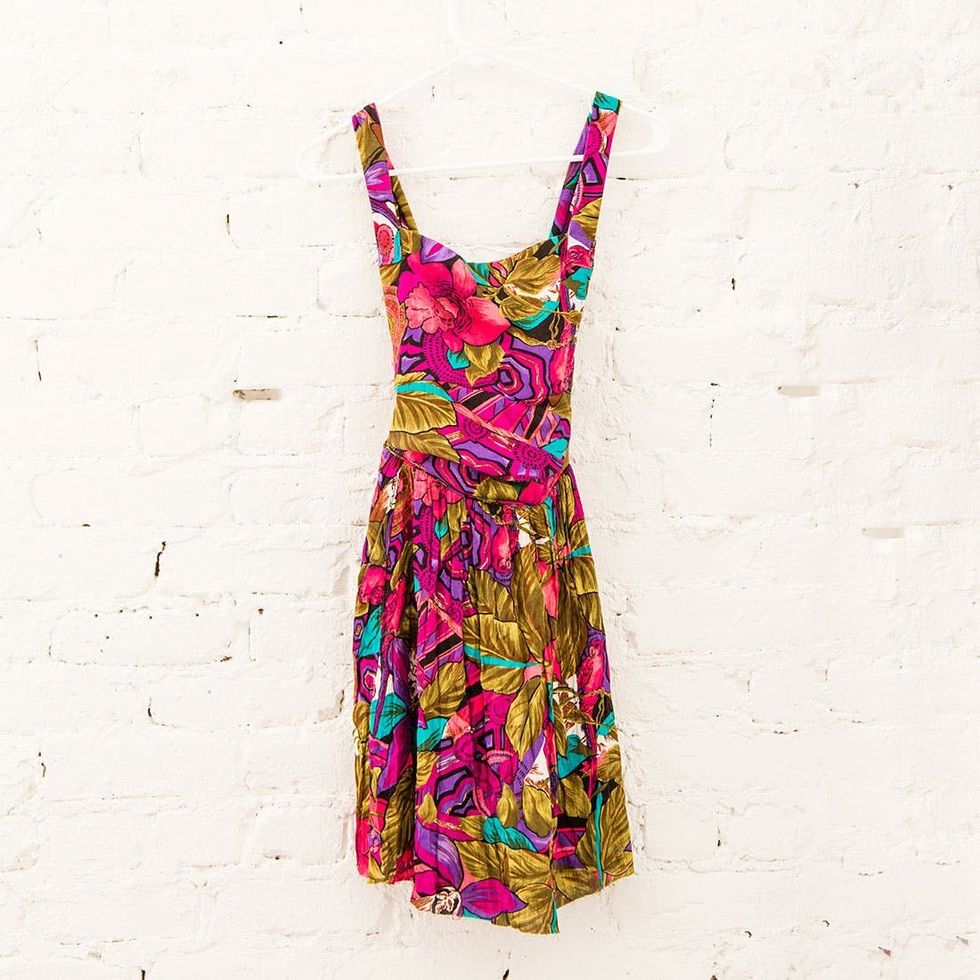
Voilà! But let’s put it on — you totally can’t tell how cute it is from this hanger picture ;)

It is safe to say that I am 100% in love with this summer-style hack. San Francisco residents — if you happen to be thrifting for maxi skirts, my apologies if they are all gone. I may or may not have cleaned out the racks to make myself 20 new jumpers.

Throw on a cute bandeau or a bathing suit top to rock underneath your new repurposed jumper.

Show us your project by tagging us on Instagram + using the hashtag #iamcreative!
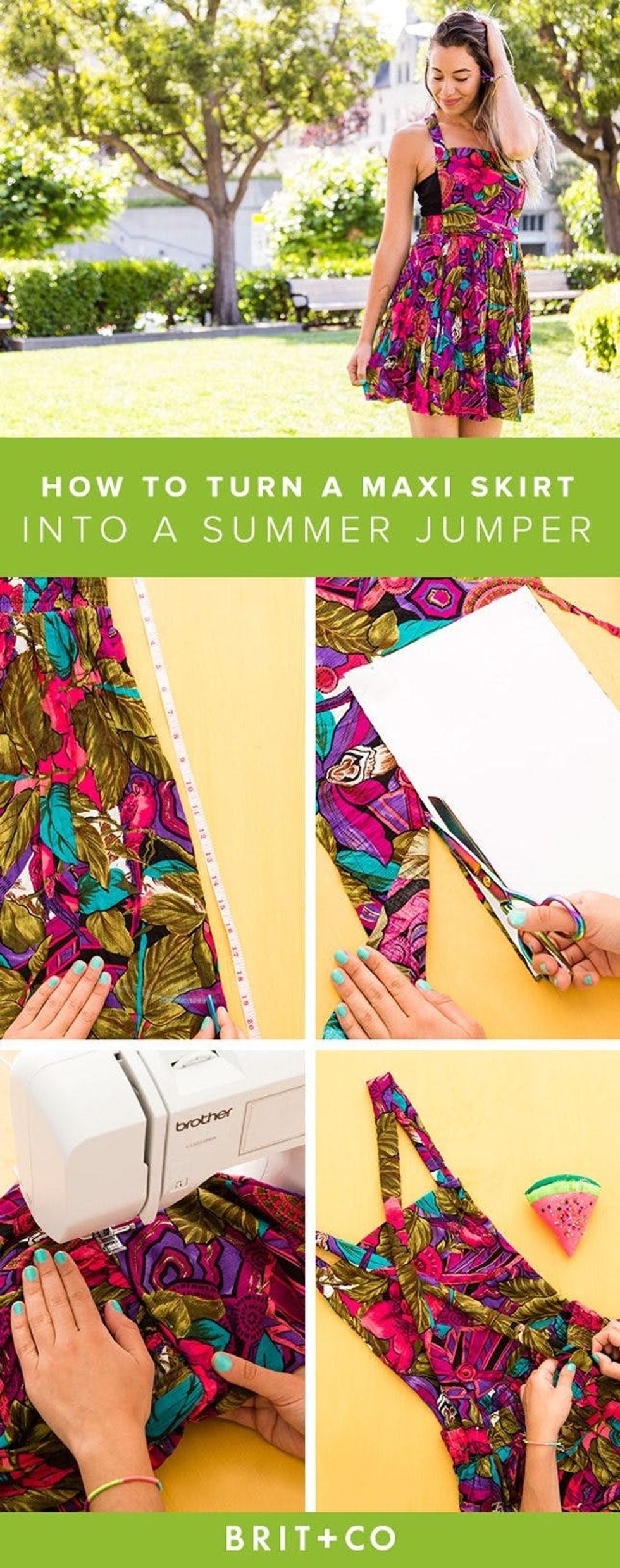
DIY Production and Styling: Kelly Bryden
Photography: Chris Andre











